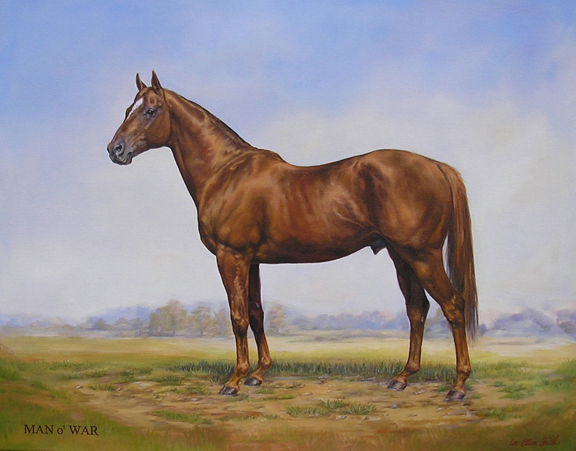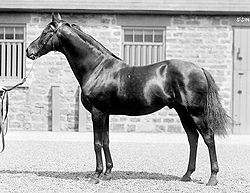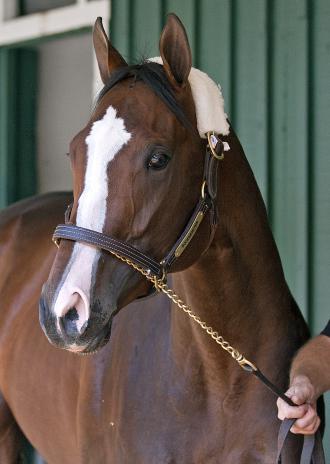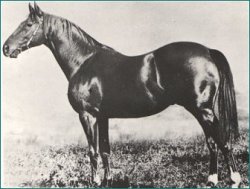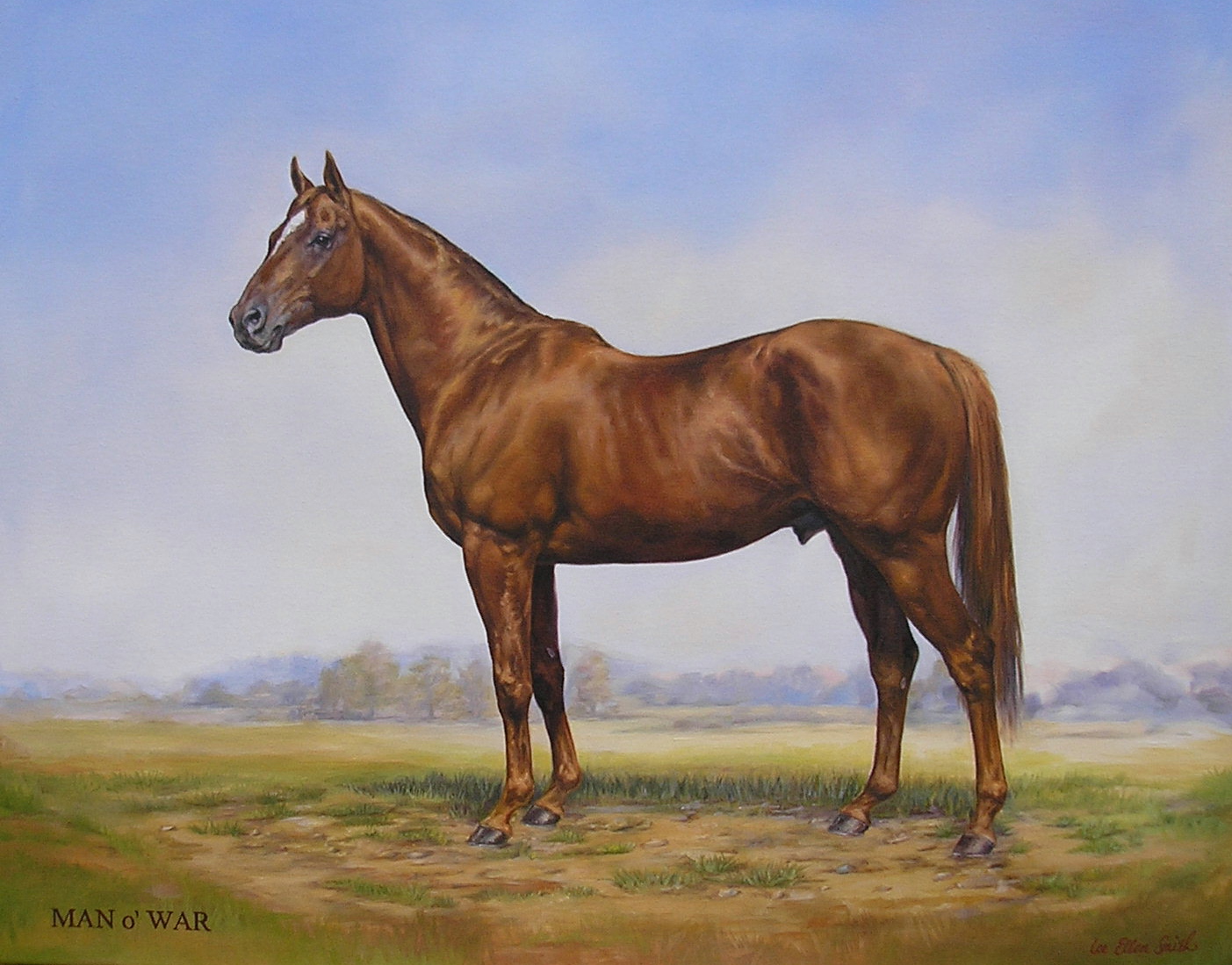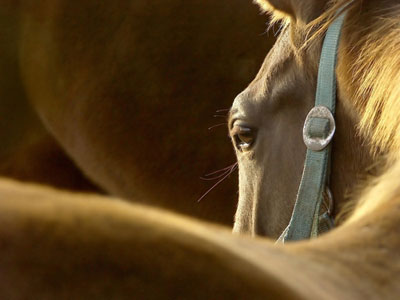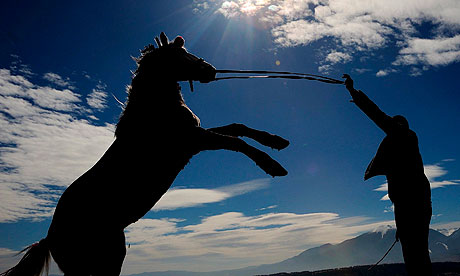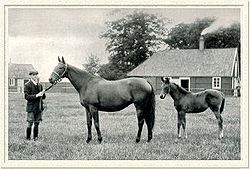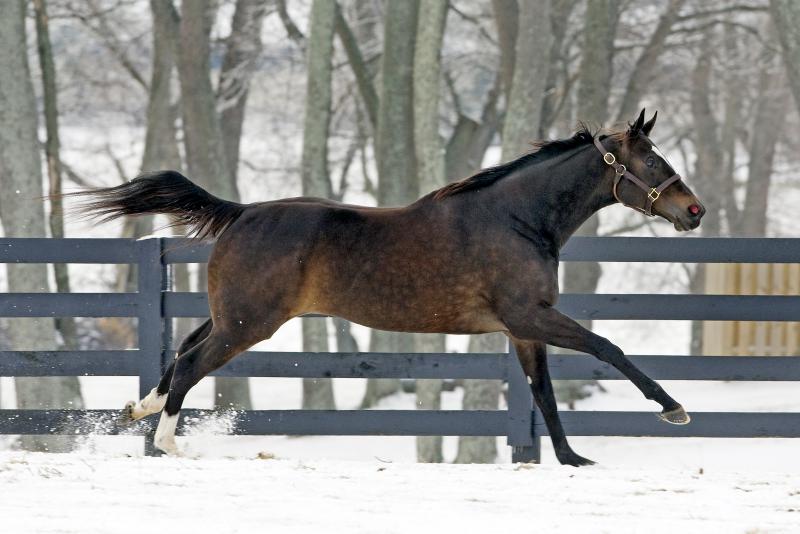In the preface to Broodmares Inc I let you know that in the next addition I was going to present to you the pedigrees of nine great horses all of which are bred exactly alike in one particular way. Just in case you don’t have a program to display pedigrees I’m providing a hot link which will display the pedigree. I would suggest that you print the pedigrees so that you can lay them out and compare one to another. All of these great horses are bred exactly alike in one important aspect but I would venture to guess that no matter how advanced you are in pedigree analysis you will see the implications until I point it out to you in the next update.
Another thing to keep in mind is that I am not a writer. I am a dedicated lover of the Thoroughbred horse who has spent a lifetime examining the lineage of the thoroughbred in hopes to make a significant contribution to the advancement of the breed. As I write these essays think of me as a friend who I talking to you from across the kitchen table because that is how I write. I believe that after I reveal to you what goes into the make-up of the nine great horses that follow, you will never look at pedigrees in the same way, and in effect your knowledge of what makes a great Thoroughbred horse will have been advanced appreciably. I’ll show you the horse, their foaling date and accomplishments and provide hot links to their pedigree.
These are the horses in question:
Hermit 1864 Epsom Derby, Leading sire 1880-1886
Chelandry 1894 One of breeds greatest broodmares
Sceptre 1899 One of greatest racemares
Buchan 1916 Obscurely bred, Leading Sire 1927
Man O’ War 1917 One of the all time greats
Gallant Fox 1927 Triple Crown
Nearco 1935 Undefeated, Leading Sire
Ribot 1952 Undefeated, Leading Sire
Nasrullah 1940 Leading Sire
There is an explanation as to why I put this exercise in the form of a question. Ever since I came upon his writing back in 1975 when I began reading his book Sire Lines I’ve been a disciple of Abram S. Hewitt. He was the first person writing on Thoroughbreds who advanced my knowledge to a great degree. In the course of his writing Mr. Hewitt would ask interesting questions. The first that I can remember was, “how did Colonel Hall Walker, later known as Lord Wavertree, breed the 2nd dams of 6 leading sires. The following is a quote from The Great Breeders and Their Methods.
“A much more interesting thing about Hall Walker was his ability to select mares with apparently the poorest of credentials, or very nearly so, both in terms of racing performance and pedigree, and from these mares “breed up” so that as second dams with such credentials they became the ancestresses of the following group of Stallions:”
Blandford (1919) by Swynford
Challenger II (1927) by Swynford
Sickle (1924) by Phalaris
Hyperion (1930) by Gainsborough
Big Game (1939)
Princequillo (1940) by Prince Rose
“Consider the odds against such an achievement. Lord Derby did not breed the second dams of Chaucer, Swynford, Phalaris, Pharos, or Fairway, and was only technically the breeder (Col. Hall Waker made the mating) of the second dam of Sickle and Hyperion. Tesio did not breed the 2nd dams of Nearco or Ribot. Calumet did not breed the 2nd dam of Bull Lea. Wheatley Stable did not breed the 2nd dam of Bold Ruler. Nor did the Aga Khan breed the 2nd dam of Nasrullah, Mahmoud, or Blenheim II. Boussac did not breed the 2nd dam of Tourbillon. Belmont did not breed the 2nd dams of Fair Play or Man o” War. James R. Keene did not breed the 2nd dams of Domino, Commando, Sweep, Broomstick, or Ben Brush. Nor did A. B. Hancock Jr. breed the 2nd dam of Round Table.
“So far as the author knows, Hall Walker’s achievement in breeding the 2nd dams of the “blue ribbon” list of sires set out above was unique, and is all the more remarkable when we consider the background of the mares in question.
When I first came across this information I researched the pedigrees of the 2nd dams of the above listed stallions in the attempt to figure out what Col. Hall Walker was doing. Remember, this was before the advent of the desk top computer so I couldn’t just type the name into Tesio Power and come up with the pedigree. As it turned out I spent years trying to decipher the riddle and I still haven’t come up with a reasonable explanation.
In 1980 Mr. Hewitt wrote an article in the Thoroughbred Record entitled The Duke of Portland and St. Simon. As strange as it may seem this article led to my meeting my hero. It’s also the primary reason that I will often pose questions to you. In his Article Mr. Hewitt explained that the Duke of Portland was considered very lucky when it came to racing. In the case of St. Simon he only became his owner when Prince Batthyany died at the foot of the stairs leading to the Jockey Club dinning room on Two Thousand Guineas day in 1883. Prince Batthyany was the owner of St. Simon and his horses were put up for sale at the July sale at Newmarket. At the sale some shenanigans were in play as St. Simon had his hock painted with a white substance trying to give the impression that he was developing a curb. Mathew Dawson the trainer for the Duke of Portland ran his hand over St. Simon’s hock and said he didn’t think there was anything that mattered and further more the white stuff smelled more like paint than blister. The result was that the Duke of Portland came into the ownership of one of the Turf’s greatest horses on a bid of 1,600 guineas.
At this point the only problem with St. Simon was that his classic nominations had been voided with the death of Prince Batthyany. A little research shows that St.Simon had only been nominated to the 2,000 Guineas and that was probably because he was foaled when his dam was 16 and she had never produced anything of note up until then. Despite never running in a classic race St. Simon retired undefeated and his quality was never in question. In 1884 he won the Ascot Gold Cup by 20 lengths defeating the previous year’s winner the great distance runner Tristan. St. Simon was so full of run after finishing the Ascot Gold Cup that it took his rider another mile to pull him up. Considering that the Ascot gold Cup is run over 2 ½ miles that is quite an accomplishment. The great jockey Fred Archer once referred to St. Simon as “a blooming steam engine”. A final tribute was added by his trainer Mathew Dawson, the trainer of 28 English Classic winners who stated, “I have only trained one great horse, and that is St. Simon”.
Abram S. Hewitt described St. Simon’s success at stud to be so meteoric that it could hardly be comprehended.
With his first crop only two-year-olds he ranked 2nd on the general sire list. From there he led the list of sires 9 times and sired 10 classic winners of 17 classic races. Even Bold Ruler’s dominance in the United States can’t be compared to St. Simon’s record. Although Bold Ruler led the sires list 8 times he only sired one classic winner that being Secretariat. But, Mr. Hewitt had a question regarding St. Simon’s breeding record. At the time he wrote the article The Duke of Portland and St. Simon Mr. Hewitt was the bloodstock advisor to Nelson Bunker Hunt. Mr. Hewitt related that although Mr. Hunt’s stud was in possession of many Grade 1 or Group 1 winning mares they were not breeding up to expectations. It was with this in mind that Mr. Hewitt related that when St. Simon first went to stud he was not bred to the mares of the highest racing class, and when he was bred to high class race mares he did not sire individuals one would expect. Mr. Hewitt went on to say, “St. Simon sired a good many of his best racers from mares that by modern standards, where racing performance ranks very high, would not be considered good mares.
As an example he showed that when mated with Quiver the winner of only 490 pounds over three seasons, St. Simon sired Memoir, winner of the Oaks and St. Leger, and her full sister La Fleche, winner of the 1,000 Guineas, Oaks, St. Leger, and Ascot Gold Cup. Quiver’s dam never ran and as a broodmare produced only one other winner of 50 pounds.
From Perdita II who ran in selling races he sired Persimmon (Derby, St. Leger, and Ascot God Cup), Diamond Jubilee (2,000 Guineas, Derby, St. Leger). From unraced Miss Middlewick he sired Oaks winner Mrs. Butterwick (Oaks), and out of non-winning Tact he sired Amiable (1,000 Guineas). From winless Miss Mildred, St. Simon sired La Roche (Oaks). From another non-winner he sired William the Third winner of the Ascot Gold Cup and Doncaster Cup who was considered by his trainer John Porter to have been unlucky when 2nd in the Derby.
For the last 12 years of his life when he was known to be the best stallion in the world and was bred to many mares of the highest racing class, he never sired another classic winner. The question Mr. Hewitt asked was, “Why Not”.
It just so happened at that time my area of expertise lay in the study of “Class in the Dam”. I had a reasonably good explanation of why St. Simon failed with the top class racemares and succeeded with those of mediocre racing class. At the time I was writing my newsletter Golden Hoofprints so I condensed Mr. Hewitt’s article to give my subscribers the gist of what it was about ( in case that hadn’t read it) and then gave my answer to why St. Simon failed to live up to expectations when bred to classic winning mares such as Canterbury Pilgrim (Oaks), L’Abbesse De Jouarre (Oaks), St. Marguerite (1,000 Guineas), Dutch Oven (St. leger), Wheel of Fortune (1,000 Guineas, Oaks), Shotover (2,000 Guineas, Derby), and Briar Root (1,000 Guineas). The facts show that classic winning mares are not the best producers of high indexed runners and the mediocre mares to which St. Simon was originally mated are. I knew this because I had done a racing index on all of the champions for the past 40 years and an index on their dams. That list now Encompasses 60 years. I also do a racing index on the winner of every current graded stakes race and an index on the winner’s dam. So you could say that I don’t wonder about what kind of racemare produces the best runner I statistically know. I also keep a list by broodmare sire as to which broodmare sires are most prolific in siring the dams of high indexed runners. I would never purchase a mare sired by a broodmare sire unable to make the list, and usually only if they are amongst the best on the list. One thought I brought forth in my book Breeding by Design is that whom ever maintains the list becomes the real expert. It is one thing to look at the list occasionally and another to be intimately involved in its creation. At any rate I sent out the newsletter giving my answer to the question Mr. Hewitt asked concerning St. Simon.
About 3 weeks later I received a letter which I will never forget. It was in a light blue envelope and the return address from a farm in Lexington, Kentucky with which I was unfamiliar. In my book Breeding by Design I relate stories that I call the romance of the turf. These are stories where something unexpected and unusual occurs which leads to a life changing event. Although I didn’t know it as I stood by the mailbox on my front porch but the letter in the blue envelope would be my experience with the romance of the turf. In fact if I had not received that letter it is very unlikely that you would be reading any of this now.
At first I didn’t realize who the author of the letter was although it turned out to be very flattering. When I got to the 3rd sentence it said, “I recently wrote an article called “The Duke of Portland and St. Simon” at this point I realized the letter was from Abram S. Hewitt. To make a long story short Mr. Hewitt suggested that we meet and spend some time together the next time I was in Kentucky for a horse sale. That fall I met Mr. Hewitt and spend three days at his farm. To me at that point in my career it was the best of times. Mr. Hewitt related to me pretty much all that he had learned about breeding the racehorse. One interesting story Mr. Hewitt told me was that when the Aga Khan first entered racing he was given some very specific advice by Colonel Hall Walker, later know as Lord Wavertree. In later years the Aga Khan intimated that had he followed that advice given him by Lord Wavertree as great as his success had been it would have been much greater. Unfortunately, no one seems to know what advice Lord Wavertree had given the Aga Khan. I believe I now know and that is the one piece of information I will not be sharing with anyone except my clients.
In our discussion Mr. Hewitt asked me how I had become so advanced in the analysis of Thoroughbred pedigrees at such an early age. My answer was simple, “it was from your work Mr. Hewitt. You allowed my knowledge to advance 50 years in a few months by writing Sire Lines. If I had to do all of the research that allowed you to write such a book it would have taken me a lifetime. In effect you handed me a lifetime of research on a silver platter”. Mr. Hewitt was very pleased with my answer and then made me promise to write a very creative book to follow Sire Lines. The information in my book Breeding by Design and that which you will read on this web site is the fulfillment of that promise. What this is about is one person with a passion for Thoroughbreds passing on information one person to another.
With that last thought I hope to see you again next week where I will reveal what the pedigrees of the nine great horses in this addition have in common.


